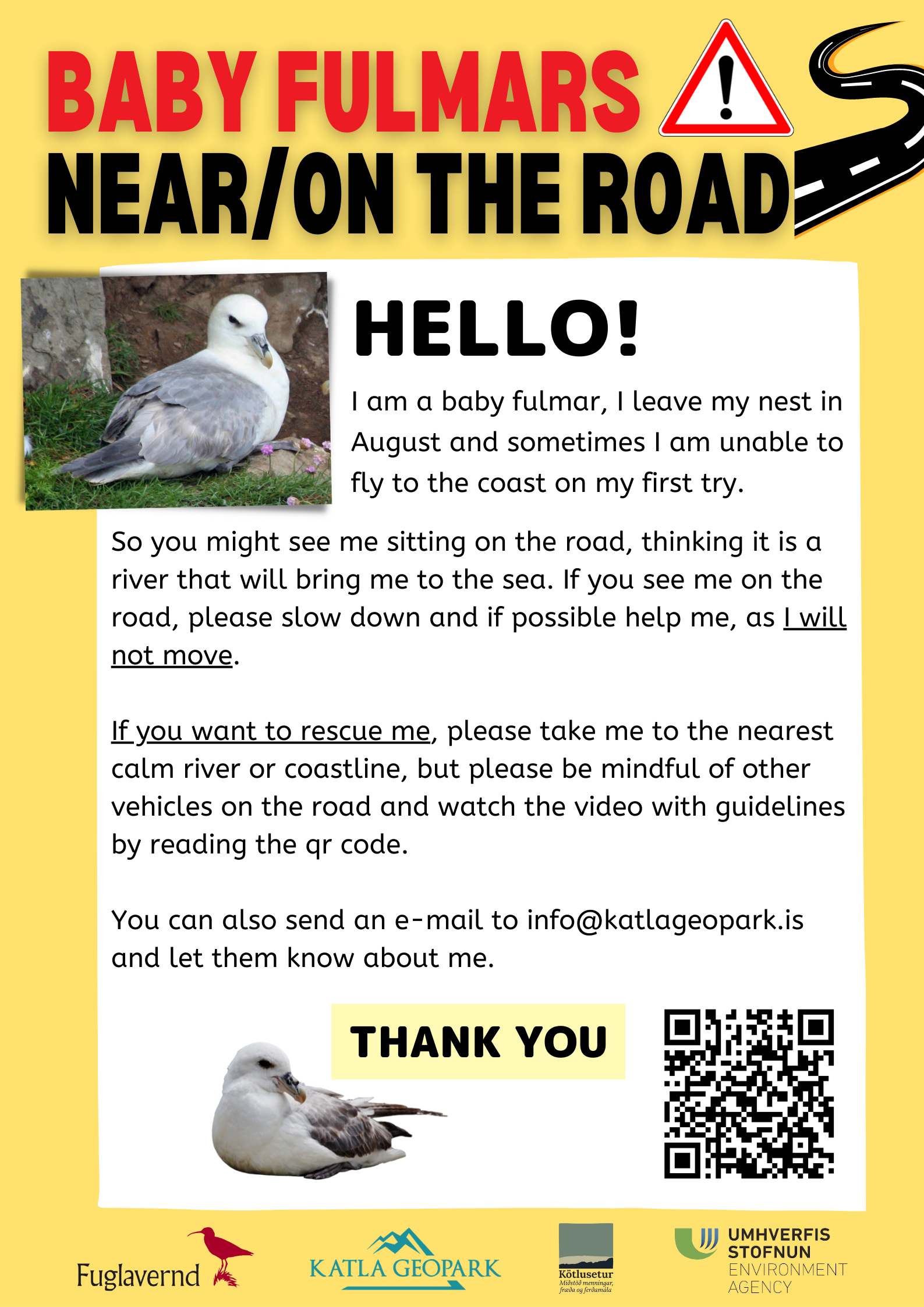Fulmar (Fulmarus glacialis) is a bird looking a bit like a seagull but it is not a seagull.
This time of year in august-September fulmar chicks glide from the nesting sills where they have been hatched and spent the whole summer being fed by their parents and usually looking great after the summer. They glide from the sill and the optional is that they land on the sea. But some of them don’t reach that far and land on fields, beaches or the worst place of all; roads! The problem for the Fulmars the next 3-6 days is that they can neither walk nor fly. They are mostly seen on the flat sands and roads in Southern Iceland but they occur all around Iceland.
What to be done about a stranded Fulmar chick? More about that here.
It is part of Procellariiformes that is an order of seabirds that comprises of four families: the albatrosses, the petrels and shearwaters, and two families of storm petrels. They all share certain identifying features. First, they have nasal passages that attach to the upper bill called naricorns; however, nostrils on albatrosses are on the sides of the bill, as opposed to the rest of the order, including fulmars, which have nostrils on top of the upper bill. The bills of Procellariiformes are also unique in that they are split into between seven and nine horny plates.
Fulmarus glacialis is the second most common breeding bird in Iceland with 1.2 million pairs; 38 colonies are of international importance (≥10,000 pairs) and 81.5% of the population breeds within important bird areas (IBA).

